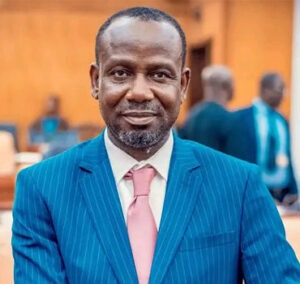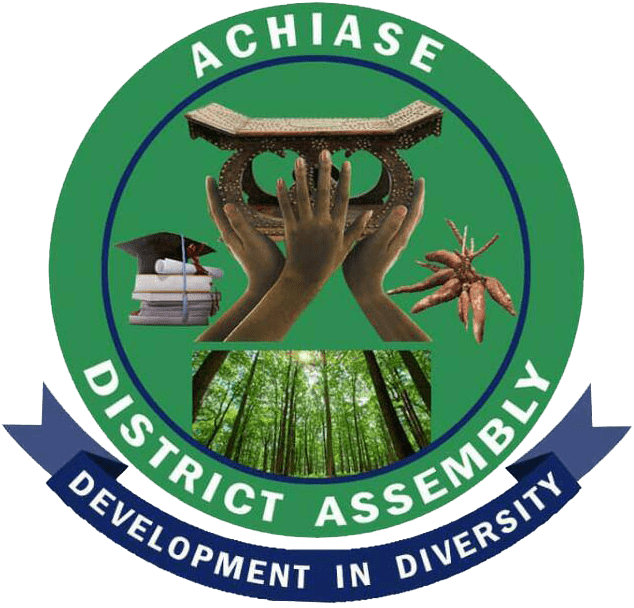About Us
Achiase District Assembly
The Achiase District was created from the Birim South District in 2019 by L.I 2370. The district which is located at the south-western part of the Eastern Region covers an estimated land area of 433km2 and it is bounded by Asene Manso Akroso to the North-East and Birim South to the North West. It also shares boundary to the south by districts in the Central Region, namely Asikuma Odoben-Brakwa, Assin Central Municipal and Assin North District. Figure 1.1 shows the Achiase District in Regional and National Context.
MOTTO
Development in Diversity
VISION:
A people centered local government institution championing development, peace and prosperity.
MISSION
The Achaise District Assembly exist to provide conducive socio-political and economic
conditions for actualization of the dreams and aspirations of the citizens through provision of
timely and appropriate policies and services to all


Core Values
- Transparency and Accountability
- Client-oriented
- Creativity and Innovativeness
- Diligence and Discipline
- Equity and Integrity
- Timeliness
Relief and Drainage
The district is mostly undulating and hilly and lies within the semi-deciduous forest zone. The underlying rock formation is mainly made up of the upper Birimian rocks. These rocks consist predominantly of volcanic lava, schist, hyalites and greywacke with; minor granite intrusions and normally gives rise to salty clay soil without course materials. The topography of Birim South District is hilly, consisting of lava flows and schist which in some cases rise to 61 meters above sea level. Hyalite (silica) and greywacke (hardened sandstone) areas have low relief and experience relatively low rainfall.
The district is drained by the Birim River. Its major tributaries include Funso, Apetesu, Asikasu, Ahonfra, Akwassua, Nsuta, Adim, Tropea and Kasawere. Even though greater part of the Birim River system in the district is permanent, it is not put to much use. It can be harnessed to serve as a source of pipe borne water supply to serve most of the communities near-by and for agricultural purposes especially in the dry season.
Climate
The district falls within the wet semi-equatorial climatic zone which experiences substantial amount of precipitation/rainfall. Annually rainfall is between 150cm and 200cm reaching its maximum during the two peak periods of May to June and September-October. This promotes intensive farming activities within these two periods i.e., May to June and September to October. The relative humidity is about 56 percent in the dry season and 70 percent in the raining season. The temperature ranges from of 25.2˚C and 27.5˚C. The undulating nature of the topography occasionally results to flooding in some communities during the peak period of the rainy season. There is the need for the district to build capacity of the National Disaster Management Organization to enhance disaster response to disaster.
Functions
- exercise political and administrative authority in the district;
- promote local economic development; andprovide guidance, give direction to and supervise other administrative authorities in the district as may be prescribed by law.
- be responsible for the overall development of the district;
- formulate and execute plans, programmes and strategies for the effective mobilization of the resources necessary for the overall development of the district;
- promote and support productive activity and social development in the district and remove any obstacles to initiative and development;
- initiate programmes for the development of basic infrastructure and provide municipal works and services in the district;
- be responsible for the development, improvement and management of human settlements and the environment in the district;
- A District Assembly shall take the steps and measures that are necessary and expedient to execute approved development plans for the district;
- guide, encourage and support sub-district local structures, public agencies and local communities to perform their functions in the execution of approved development plans;
- initiate and encourage joint participation with other persons or bodies to execute approved development plans;
- promote or encourage other persons or bodies to undertake projects under approved development plans; and
- monitor the execution of projects under approved development plans and assess and evaluate their impact on the development of the district and national economy in accordance with government policy.

